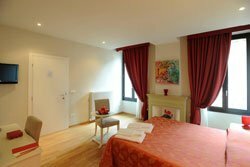Ferrara is a medium-sized town near Bologna. It can be easily reached by train. It is less than 50 kilometers from the capital of the Emilia-Romagna region, and yet, despite the middle of the summer season, we did not meet crowds of tourists in it. We arrived there completely by accident. It wasn’t a city we’d heard about before, the name came up somewhere near the road, and we wanted to rest from the heat pouring from the sky, drink a glass of something cold, so we thought it was a great place. Later we regretted only one thing – that we had so little time when we were only passing through, that we couldn’t stay there any longer because it’s one of those cities you can fall in love with. What can you see in Ferrara? Read our guide to Ferrara, the Renaissance pearl of Italy.
A guide to Ferrara – a city with the perfect proportions
The Ferrara really gained in importance thanks to the reign of the d’Este family. During their reign, the construction of the castle of St. Michael was started, the palaces that are still inhabited today, the university, where many famous people studied. The power and importance of Ferrara can be proved by the fact that Prince Alfonso d’Este married the daughter of Pope Alexander VI. It was in Ferrara that the controversial Lucrezia Borgia found peace. She created a house open to artists, she promoted painters and musicians, took care of them, she was a just ruler and a good mother. Thanks to her, Ferrara became a Renaissance scientific and cultural center. Ferrara developed so rapidly that it was not able to accommodate all the inhabitants, so in 1492 it was decided to expand the city with a new Renaissance district. It was enlarged by half, but most importantly, it was done in such a way that the new district was a complement to the old medieval one and not a replacement for it. Nothing was demolished, the medieval layout of the streets was preserved, they were extended, and the reconstruction was carried out with full respect to past ages.
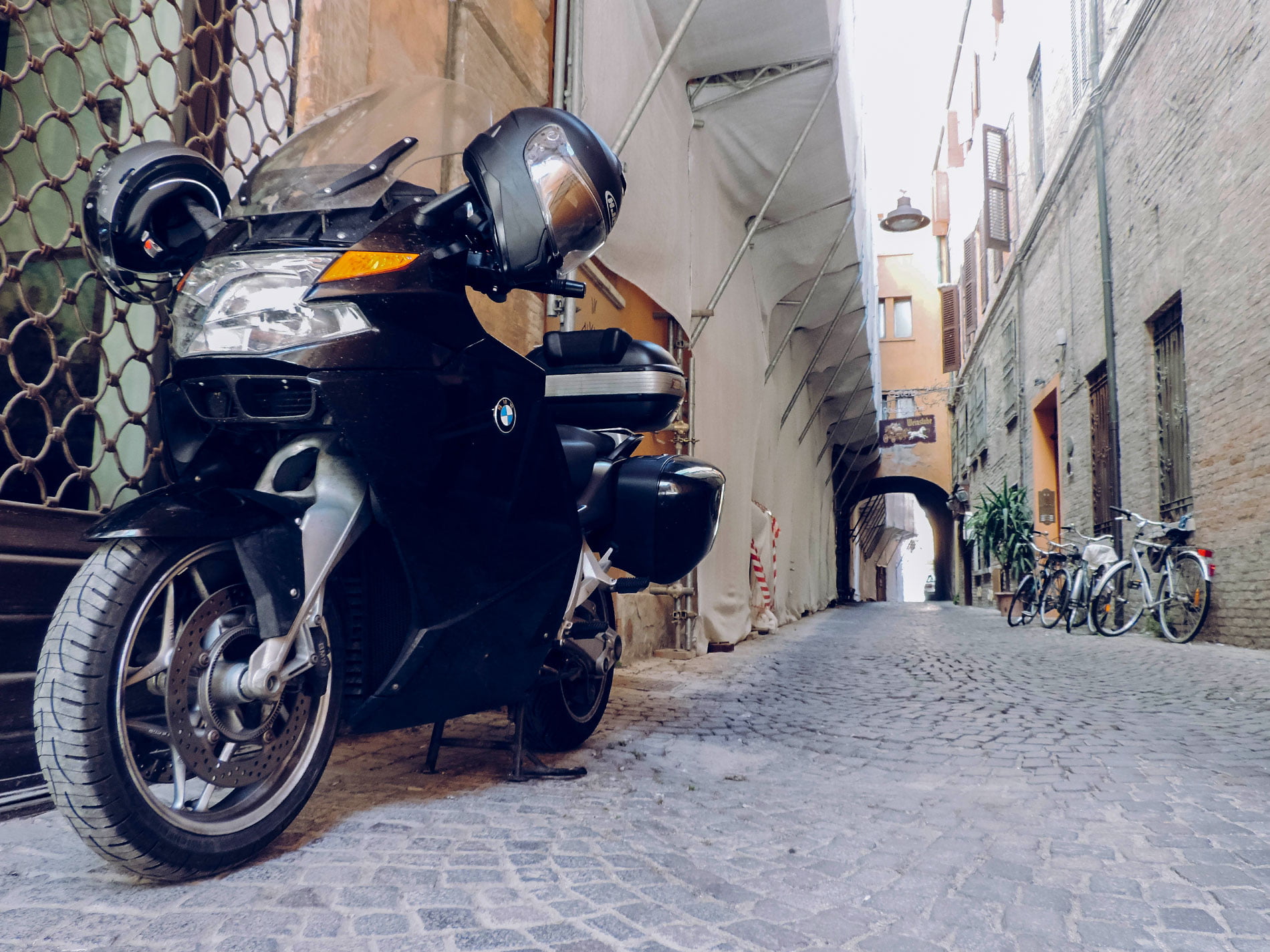
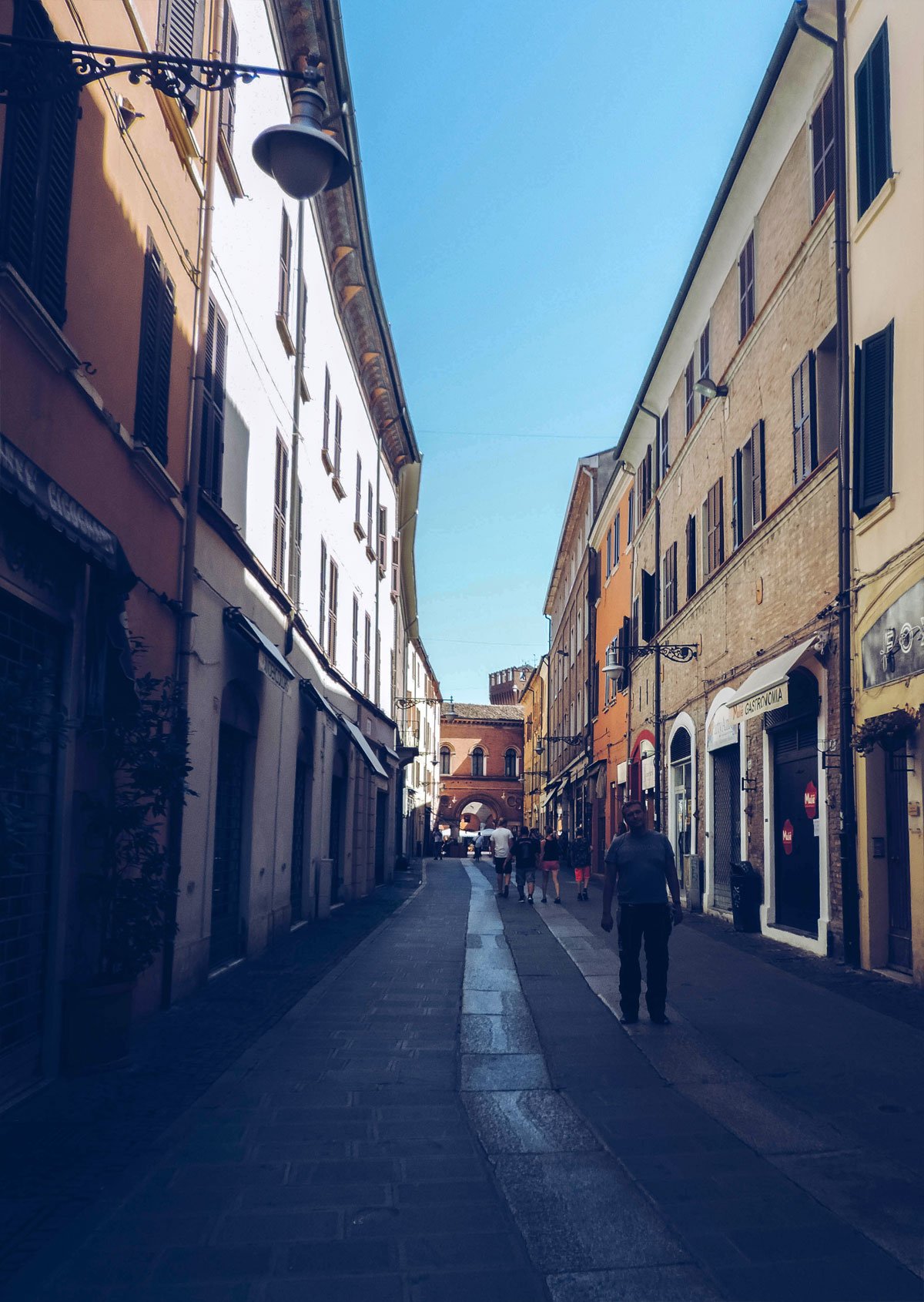
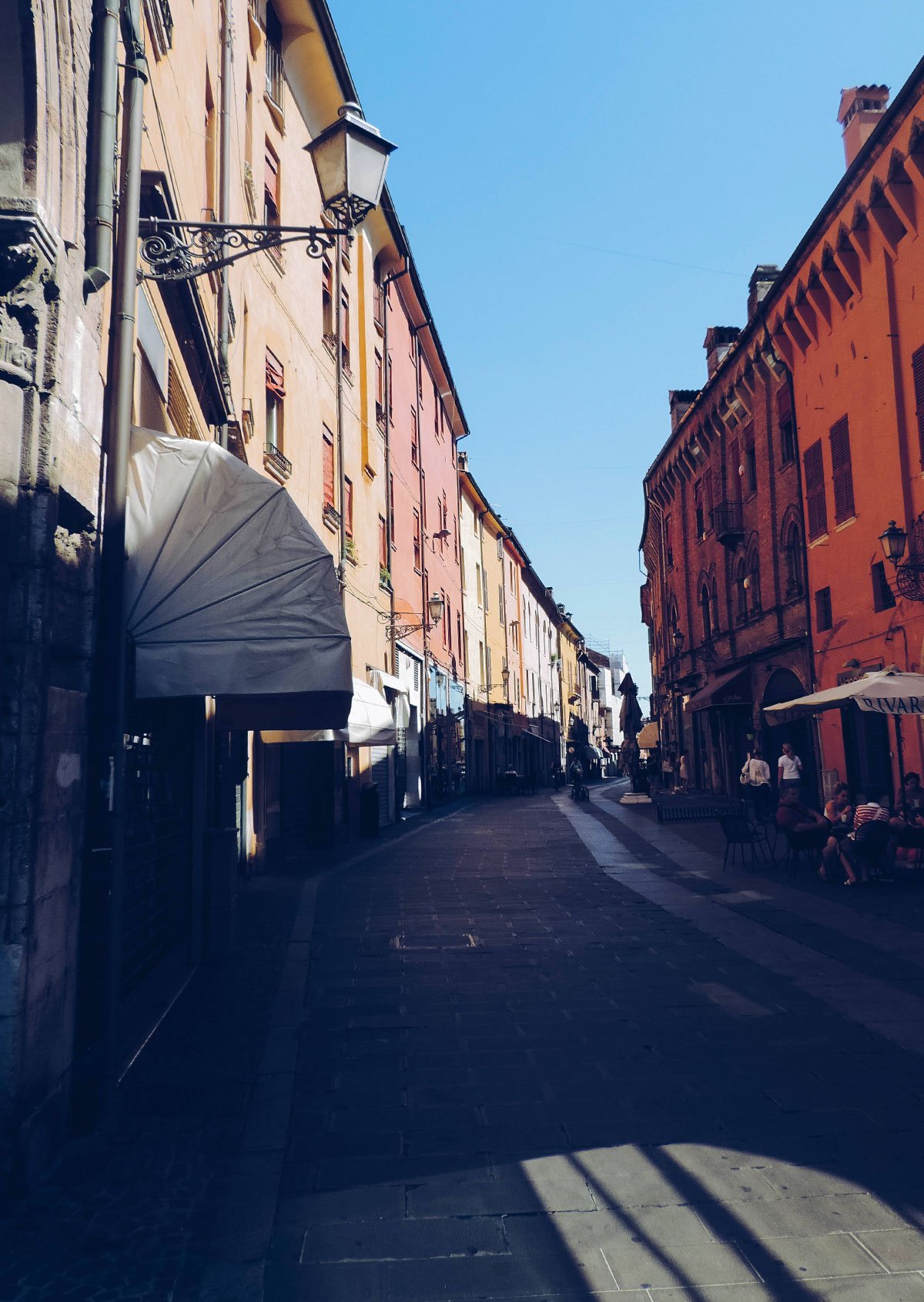
Thanks to this, the city was obtained with perfectly golden proportions, which was strived for in antiquity and later in the Renaissance (epoch who drew from ancient knowledge and leaned towards the same ideals). The streets that lead to the city are ideally 2 km long and intersect at the Palazzo dei Diamanti. If we had doubled the length of the radius and drawn a circle from the center of Palazzo dei Diamanti, all the most important buildings would have been in the center. And it is thanks to this view of the urban layout of the city that Ferrara was declared a UNESCO World Heritage Site and is considered to be the first modern city in Europe.
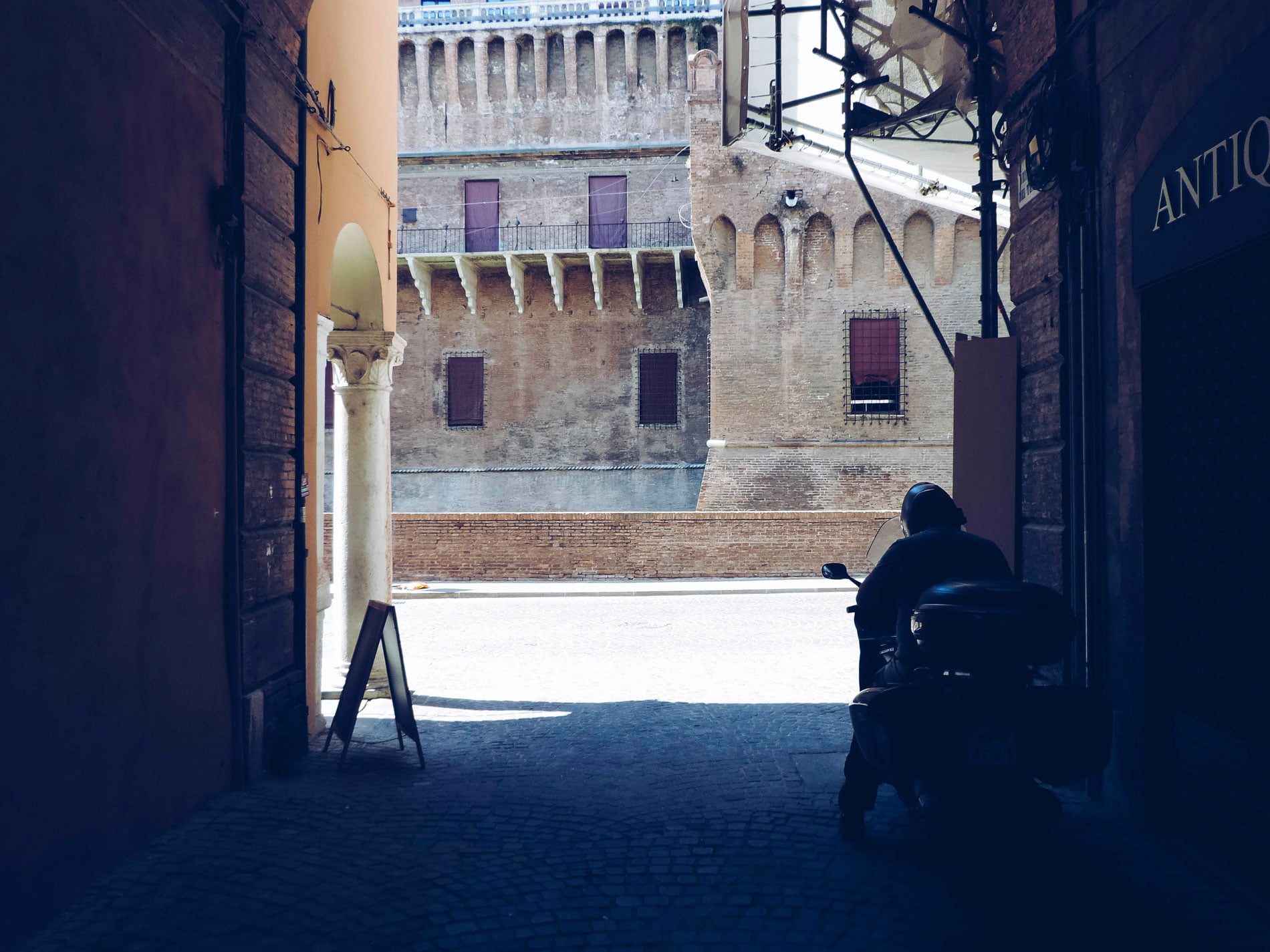
A guide to Ferrara – Castello Estense
The castle, which is located almost in the city centre, is probably the most recognizable and characteristic building in Ferrara. It is still surrounded by a moat and it can be reached by one of the three drawbridges. It is now a tourist attraction, once used as a fortress, built in 1385 by Niccolò d’Este to protect himself and his family. Interestingly, to protect not from the invaders, but from his own people. We didn’t have time to visit the castle from the inside, but it’s probably worth it. A real treat for history lovers will be the almost intact shape of a dungeon and prison, including the cell in which Prince Gulio D’Este was kept, accused of conspiracy against Duke Alfonso I.
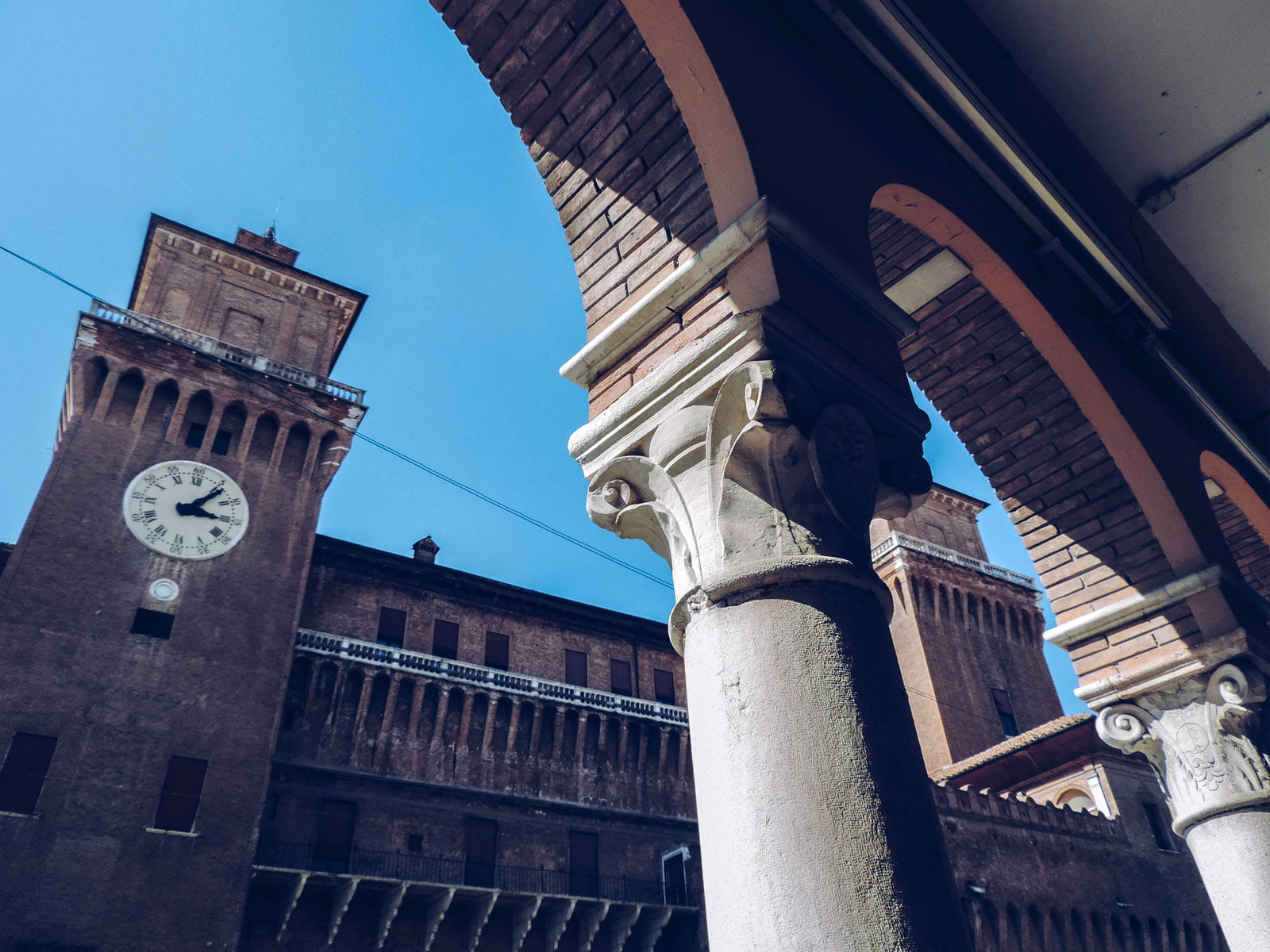
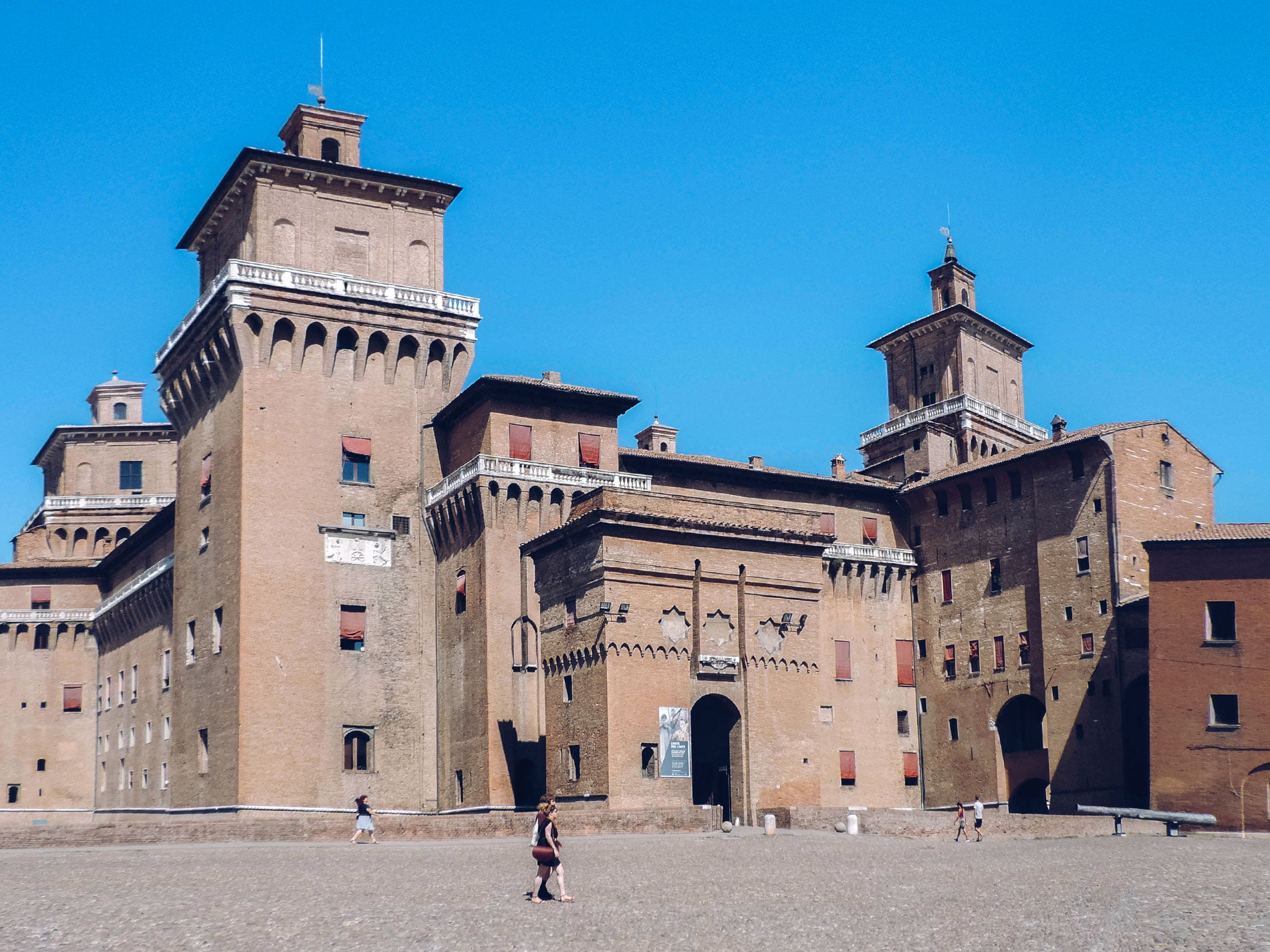
A guide to Ferrara – San Giorgio Cathedral
This 12th-century cathedral is famous for its impressive facade, the lower part of which is in Romanesque style, while the upper part is in the Gothic style. Unfortunately for us, in 2016, conservation work began, and it is unknown when it will be completed. On the south side of the cathedral, a Renaissance campanile was built between 1451-1493, which was never completed. It is said, that it was designed by the famous Leone Battista Alberti.
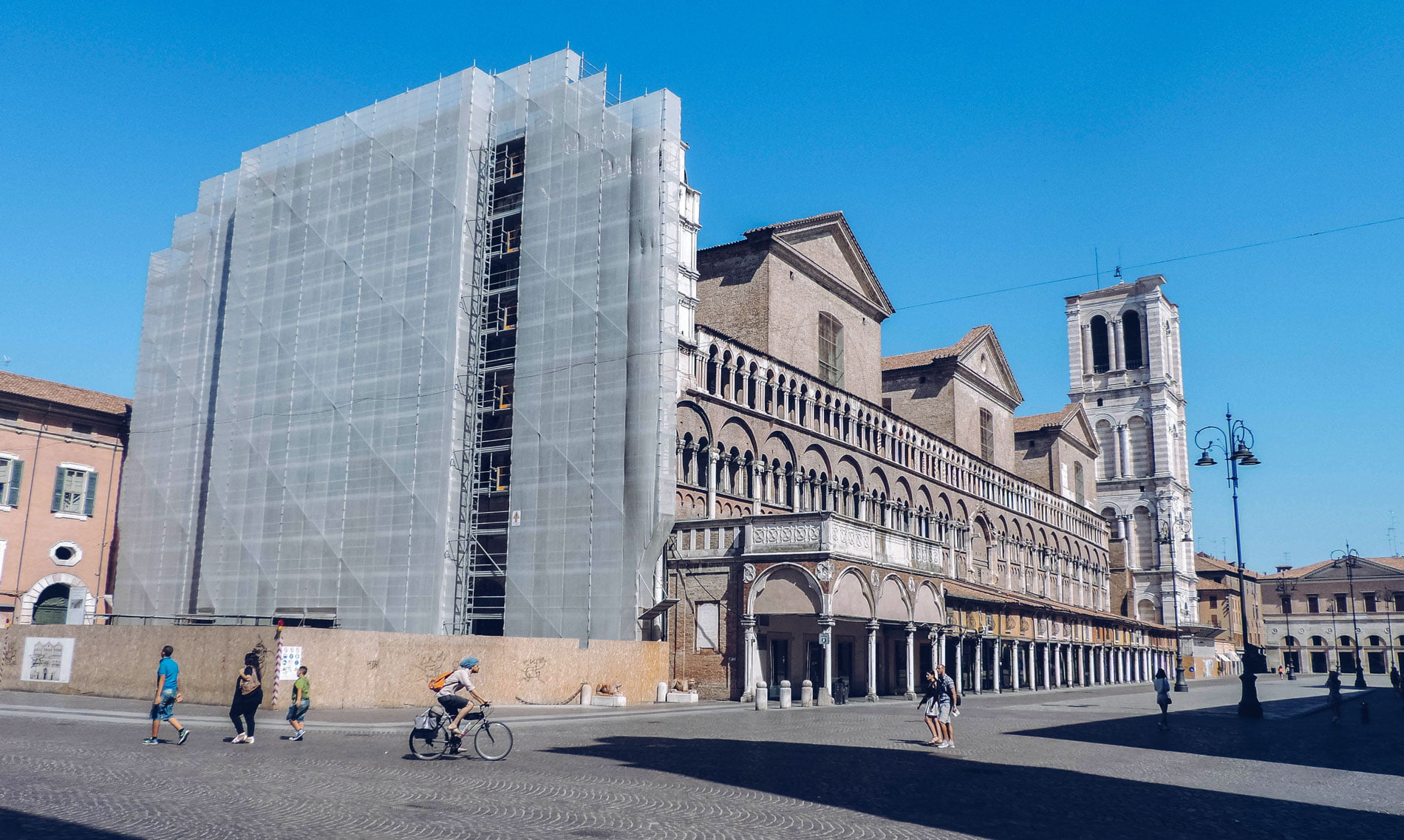
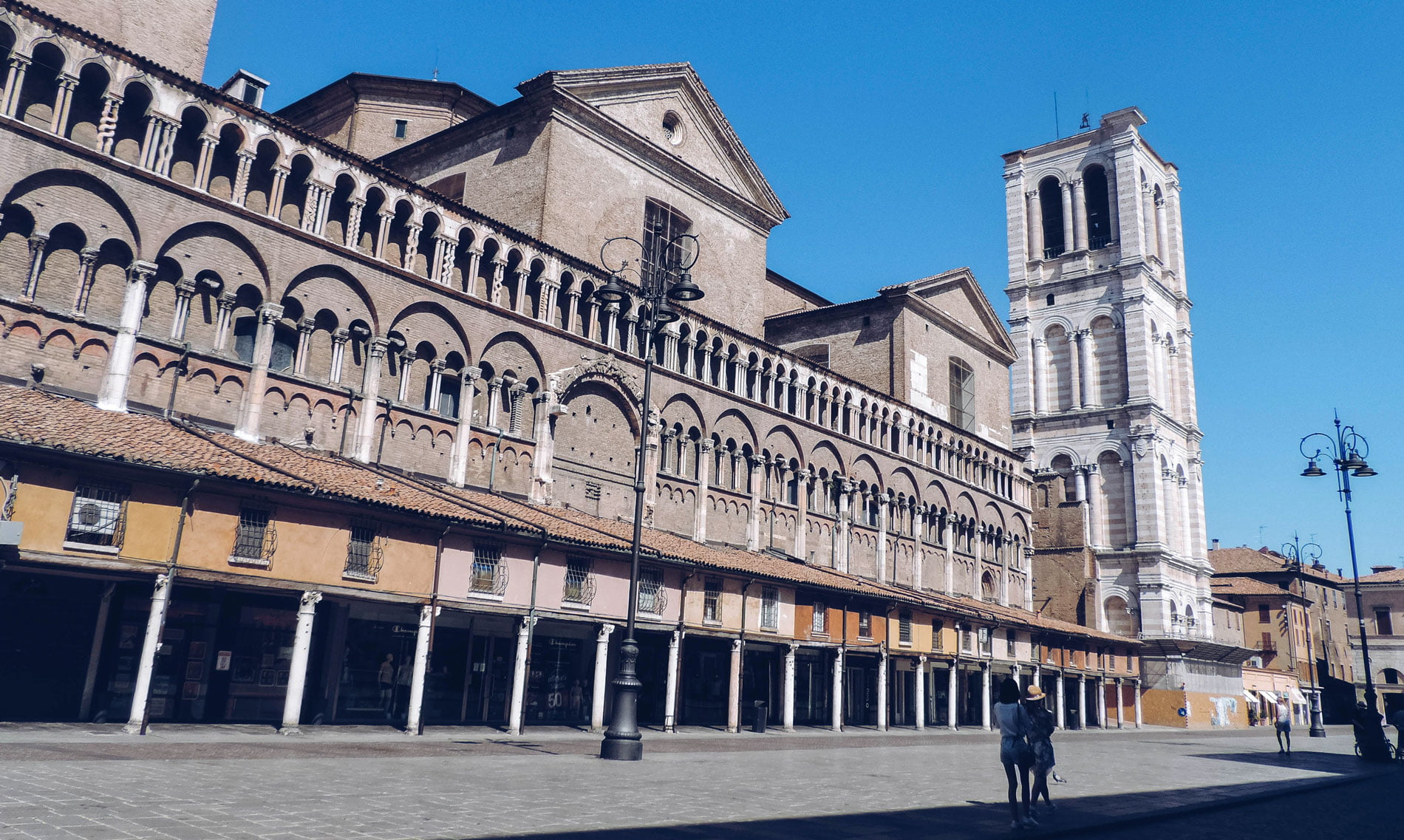
A guide to Ferrara – the Jewish district
The Via Della Volte is a real Ferrara gem. This charming street in the Middle Ages was inhabited by merchants, who used the nearby river to transport and trade all over the peninsula. The characteristic arches were used to transport goods to the riverside warehouses. They were used to ensure safety and protect against attacks. Today, the VIa Della Volte continues to charm tourists with its lazy life and wonderful climate. Mandatory “must to see” for those in Ferrara.

Guide to Ferrara – good wine in the oldest wine bar in the world
Enoteca Al Brindisi is located right next to the cathedral and is the oldest wine bar in the world with traditions dating back to 1435. Above the bar, there are rooms that used to be a student dormitory of the theological faculty. It is said that Nicolaus Copernicus lived in there itself. In Enoteca Al Brindisi, you can have a great meal and drink really good wine, we heard opinions that it is the best restaurant in the whole Ferrara.
What else is worth to know about Ferrara?
- Most of the monuments are located within the walls of the old town, so the best way to visit Ferrara is on foot or by bike. Ferrara is probably the most bicycle city we’ve seen and you’ll sooner see a bike than a car. Most hotels offer the possibility of renting a bicycle. Not without a reason, because Ferrara has a lot of bike paths and routes. You can read more about it on the town’s website.
- It is worth starting your tour with Castello Estense. In its courtyard, in the tourist information office, you can get a brochure with a city plan and specific tourist routes.
- The tickets to the castle cost €6. However, it’s worth checking the time of entry, because as it happens in Italy, it’s often closed during the day.
- The best observation point for the whole Ferrara is the Lion Tower at the castle. The ticket costs 2€ and the tower can only be entered until 16:00.

Are you looking for a place to stay in Ferrara?
We would be pleased if you could use our referral link to BOOKING.COM. You will appreciate the time we spend on running our blog and help us to expand it further. Below you will also find our suggestions for accommodation in Ferrara.
A bunch of useful information and links at the end
- Practically information about Italy, what to look for and prepare for, you can find in our guide Italy practically.
- Our route, which we chose when going to Italy, is described here. You will find there a map and useful information.
- We wrote about the traffic regulations and parking rules in Italy in this article.
- Do you drive on Italian motorways? Check in our article what costs you have to prepare for.



